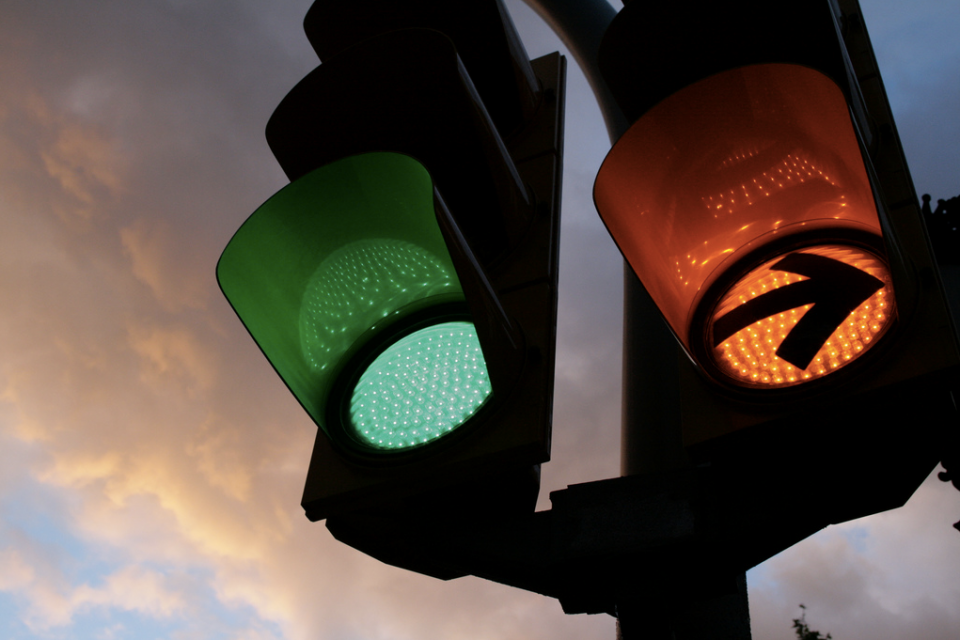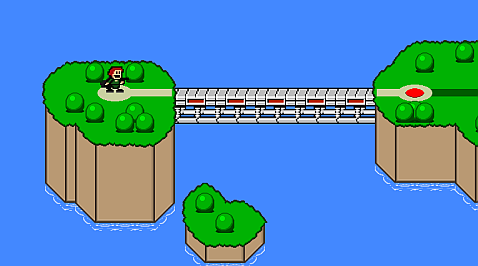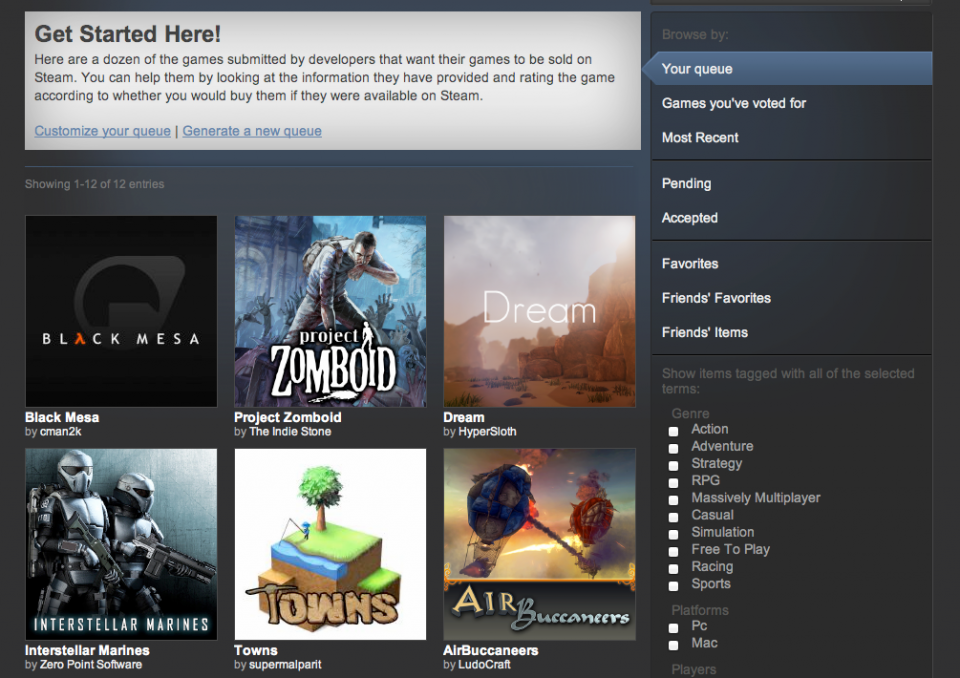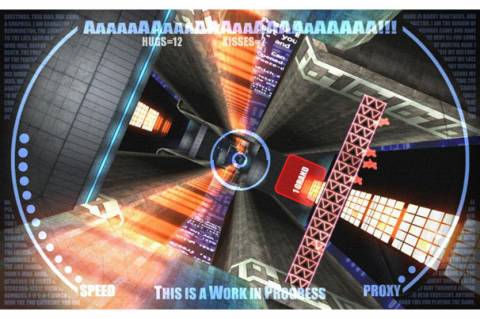
Not everything Valve touches turns to gold, so proveth the rocky launch for Steam Greenlight, and the ensuing response to the big changes Valve has made to its independent-focused service just a few days after launching.
The change that’s caused the most discussion and raised exasperation is a new requirement for submission: pay $100 for the potential opportunity to become part of the Steam marketplace. It’s a chance, not a guarantee, and Valve’s tried to block some criticism by promising to send every payment to Penny Arcade’s Child’s Play charity.
The requirement was prompted by a slew of junk submissions, including fake version of Half-Life 3.

“Two things we’ve noticed so far,” said Valve in a blog post. “First, there are a ton of legitimate submissions that people want to see. Second, there is unfortunately a significant amount of noise and clutter being submitted, either as a joke or by fans not fully understanding the purpose of Greenlight.”
Greenlight is meant to curb an increasing problem for Steam. The company cannot realistically judge every game that’s submitted for consideration, and decided to enlist the community for help to ensure games deserving of a spot don't slip through the cracks. I’ve heard from frustrated developers over the years upset at receiving little to no feedback from Steam after being rejected, and Greenlight is (in theory) meant to keep those examples to a minimum. Or, at the least, reduce it.
The change does not impact games already been submitted, and is required once per developer, not per game.
Developers I’ve spoken to since the change occurred have expressed decidedly porlaized opinions.
“It's good they are doing this, it keeps the flow of games down to people who are serious about their work,” said Super Meat Boy and Binding of Isaac co-creator Edmund McMillen. “It's $100 to enter into the IGF [Independent Games Festival], I did this for years [and] only made it in 30% of the time. You should only put your stuff on Greenlight if you believe you have a realistic chance of getting those votes, the 100$ charge makes that a very clear barrier of entry. Same goes for the IGF.”
Michael “Kayin” O’Reilly, better known as the creator of the sadistic I Wanna Be the Guy, is working on a game for submission into Greenlight. He’s not so sure Valve’s quick decision to charge $100 for a Greenlight listing was the best way to solve its problems.
“If we're talking about a service that's meant to try and manage small indie games, is the best way to try and charge money from a group of traditionally poor people?” said O’Reilly. “It is -a- limiting measure, but is it the best one? [...] if Valve was pocketing the 100 dollars, I think we'd have to accept that this is a part of business, but clearly this is a situation where there are a lot more possible solutions that can possibly benefit Steam more in the long run.”

O’Reilly said Valve should have implemented less drastic measures to tweak the service to avoid this reaction, and would be “exceptionally surprised” if the $100 requirement sticks around. That Valve didn't introduce the $100 fee with other substantive changes struck him as odd and reactionary.
“The 100 dollar fee isn't meant to necessarily stop games that may or may not succeed, it's meant to stop junk entries or REALLY low quality entries,” he said. “So it's tough. Greenlight was supposed to reduce a lot of the risk and frustration of dealing with Steam, so it's really sorta hurting itself by making it seem less inviting. I think alternative ways of getting on the services is it's best bet. A bigger budget game will probably just drop the 100 bucks, while smaller games might use other methods.”
McPixel designer Sos Sosowski was part of Greenlight’s beta, and sympathized with Valve’s plight. It did, however, prompt mixed feelings about the difference between going through Steam’s regular submission process and rolling the dice with an active community of users on Greenlight.
“It struck me that anyone can submit a game just like that in the very beginning, but I was sure that it's going to be well managed and under control,” said Sosowki. “Valve got disillusioned quickly and got reminded what the internet is.”
“I think that the fee made the Greenlight service redundant as soon as it was introduced,” he continued. “If there was a fee for the standard submission process, where Valve team reviewed each game, Greenlight would not be needed at all. So now that the fee is introduced, and only people that are serious about it and want to invest this much are allowed in, Valve could easily manage to look over all the submissions as they appear and make their picks. I don't agree that paying for ‘maybe’ getting onto Steam service is wrong. I'm saying paying to get onto Greenlight makes it redundant.”
It’s been less than a week since Greenlight launched, though, and the $100 requirement is a rather huge change in philosophy after a few days of content submissions. Proteus designer Ed Key is puzzled at the move.
Key proposed a two-step renovation. There would be a pre-Greenlight listing phase, in which the community would help filter out the crap, and avoid having the front page overrun. It would create another layer between what the general public sees on Greenlight and power users. Given the fiery reaction to the $100 requirement, Key suggested Valve start offering free Greenlight listings to nominees and finalists in the big festivals. I wouldn’t mind seeing popular Ludum Dare entries given the opportunity to submit sans requirement, either. Outreach could be key.
“I'm a bit worried the $100 will further skew the balance towards safe commercial games rather than games that could find an audience once on a major platform,” said Key. “[...] Big kudos to Valve for updating the system and being so agile, but charging a fee just seems like the 'nuclear option' at this early stage.”

Alexander Bruce is the pink-suited designer of the hopefully-almost-done puzzler Antichamber, and cautioned against developers anxious over Greenlight’s changes, and to consider all available options.
“Several people have pointed out that there are talented people out there who live day to day who would not be able to afford the $100 fee,” said Bruce. “I don't understand this argument, because even without the fee in place, there's no guarantees that those developers would get their game on Steam in the first place. So they're either relying on their game being on Steam to support themselves, which Greenlight isn't offering in the first place, or they are able to support themselves independently and should be able to find a time somewhere when paying the fee would be reasonable.”
Bruce suggested developers stressing over the $100 should stop thinking Steam as the center of the universe. Maybe put Steam on the sideline, and focus on launching the game elsewhere. Games like QUBE and Offspring Fling have used pre-Steam launches to build word-of-mouth. With enough buzz, it may even be possible to avoid the Greenlight process entirely, and even if that’s not possible, the outside reaction should help your cause on Greenlight itself.
“If by going through these methods you're unable to find an audience to give you $100 for a Greenlight submission,” said Bruce, “I’m not sure what makes you think that your situation is going to be any different once you actually have your game on Greenlight and then need to drum up enough support to get it noticed by Valve.”

If the $100 requirement does remain a permanent fixture of Greenlight, some will help shoulder the burden. AaaaaAAaaaAAAaaAAAAaAAAAA developer Dejobaan Games is running a contest of sorts to loan $100 to a creator. Nicalis, responsible for helping bring Cave Story, La-Mulana and NightSky to places outside Japan, is also offering up $100 to three developers.
Both Dejobaan and Nicalis said the idea isn’t about whether the fee is a good or bad idea.
“I don't have the foresight to see how all of this will play out,” said Dejobaan president and co-founder Ichiro Lambe. “Will it help highlight new and wonderful games? Will it keep potentially great titles out? I think we'll find out over time. Who gives two rat's asses about my stance on this?”
“The folks I've met from Valve genuinely want the industry to be a better place for small developers, so I'd like to see more of 'em on that platform," he said. "If I can help a ramen-eating dev team submit a great game--and encourage other successful indie devs to do the same--then we're indies at our best. If it means that that great game gets a chance to sell on Steam, fantastic. And you know what? The worst that comes out of this is that my $100 goes to a charity that uses video games help kids cope with illness.”